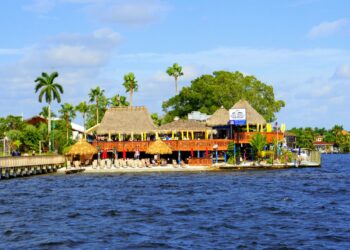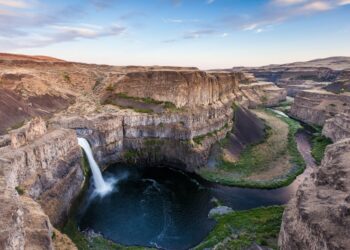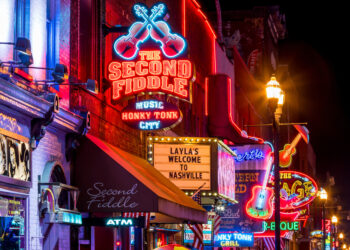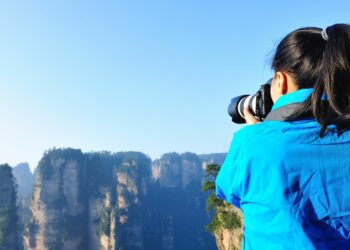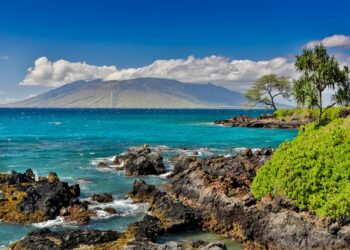If you’re an animal lover seeking a unique travel experience, a wildlife safari in Africa is an unforgettable adventure. Africa is home to abundant wildlife, from the big five game animals (lion, leopard, elephant, buffalo, and rhino) to an array of bird species and smaller creatures. In addition, the continent offers a variety of national parks and game reserves where visitors can observe these amazing animals in their natural habitat. This guide will provide you with essential tips for planning your dream safari.
Choosing the Best Time to Visit
The best time to visit Africa for a safari depends on the country you plan to visit and the animals you want to see. Generally, the dry season is the ideal time for a wildlife safari, as this is when animals gather around watering holes, making it easier to spot them. In East Africa, the dry season runs from June to October, while in Southern Africa, it’s from May to September. However, if you’re interested in seeing baby animals, the rainy season is the most ideal time to visit, as many animals give birth during this time.
Affiliate Disclaimer: Our blog posts may contain affiliate links. If you make a purchase through these links, we receive a modest commission at no extra cost to you. These commissions help us fund our team of travel writers, allowing us to continue providing you with the latest travel news, tips, and inspiration. Your support keeps this blog alive and thriving, and we appreciate it immensely. Thank you!
Selecting the Right Destinations
Africa has numerous safari destinations, each offering a unique experience. East Africa, which includes Kenya and Tanzania, is known for its vast grasslands and the great wildebeest migration. Southern Africa, which includes South Africa, Botswana, and Zambia, is known for its diverse landscape and wildlife, from the lush Okavango Delta to the arid Kalahari Desert. The best way to decide on a destination is to research each country and park’s features and choose based on your preferences.
Choosing the Right Accommodations
The accommodation options for a safari in Africa vary widely, from luxury lodges and tented camps to budget-friendly options. Choosing suitable accommodation that meets your needs and budget is essential. Luxury lodges and tented camps offer premium amenities, often including game drives and other activities. However, they can be expensive, so it’s worth considering a more affordable option if you’re traveling on a budget. Budget-friendly options include camping sites and basic lodges that provide the necessary facilities.

Planning Activities
Game drives are the main activity on a wildlife safari, and most lodges and camps offer morning and afternoon game drives. These drives are usually conducted in open-air vehicles and are led by experienced guides who know the animals’ habits and behaviors. In addition to game drives, there are other activities you can enjoy, such as walking safaris, bird watching, hot air balloon rides, and cultural tours.
Health and Safety
Health and safety are crucial to consider when planning a safari in Africa. Taking precautions to protect yourself from mosquito-borne diseases like malaria and yellow fever is essential. Consult your doctor before traveling and take the recommended vaccinations and medications. It’s also important to bring appropriate clothing and gear to protect yourself from the sun, insects, and other hazards.
Respecting Wildlife and the Environment
As a responsible traveler, it’s crucial to respect wildlife and the environment when on a safari. Ensure to follow the park’s rules and regulations, such as not getting out of the vehicle in the garden and not littering. Respecting the animals’ space and not interfering with their natural behaviors is also essential. Furthermore, choose safari companies that prioritize sustainability and support conservation efforts.
In conclusion, a wildlife safari in Africa is an unforgettable experience that requires careful planning and consideration. By choosing the right destination, accommodations, and activities and considering the culture, you will get the most out of your vacation.

Best Wildlife Safari Spots
With abundant wildlife and beautiful landscapes, it is no wonder Africa is a top destination for wildlife safaris. Here are some of Africa’s best wildlife safari spots, each with unique features and experiences.
Masai Mara National Reserve, Kenya
The Masai Mara National Reserve is among the most famous safari destinations in Kenya, located in the southwest part of the country. It is famous for its annual wildebeest migration, which takes place between July and October when millions of wildebeest and other animals move from Tanzania to Kenya in search of greener pastures. The reserve is also home to other big five game animals, such as lions, leopards, elephants, buffaloes, and an abundance of bird species.
Serengeti National Park, Tanzania
Serengeti National Park is one of Tanzania’s largest and most famous safari parks. It is renowned for its vast savanna plains and the annual wildebeest migration, which takes place from December to July. Visitors can witness millions of wildebeest and zebras crossing rivers and plains during this time. The park is also home to other big five game animals and various bird species.
Kruger National Park, South Africa
Kruger National Park is the biggest game reserve in South Africa and one of the oldest. It is home to the big five game animals and a diverse range of flora and fauna. The park offers various accommodation options, from luxury lodges to basic campsites and a range of activities, such as game drives, walking safaris, and cultural tours. Visitors can also enjoy other experiences, such as hot air balloon rides and visits to local villages.

Okavango Delta, Botswana
The Okavango Delta is a unique destination in Botswana’s northwestern part. It is the largest inland delta in the world, covering an area of over 15,000 square kilometers. The delta is home to a wide range of wildlife, including elephants, lions, leopards, cheetahs, and an array of bird species. Visitors can explore the delta on a mokoro (traditional dugout canoe) rides, walking safaris, and game drives.
Ngorongoro Conservation Area, Tanzania
The Ngorongoro Conservation Area is a UNESCO World Heritage Site in northern Tanzania. It is home to the Ngorongoro Crater, the largest intact volcanic caldera in the world. The crater is home to an abundance of wildlife, including the big five game animals, as well as rare black rhinos. Visitors can enjoy game drives, walking safaris in the crater, and cultural tours to nearby Maasai villages.
Chobe National Park, Botswana
Chobe National Park is one of Botswana’s most famous safari destinations in the north of the country. It is renowned for its large herds of elephants, which can be seen crossing the Chobe River in the dry season. The park is also home to other big five game animals and an array of bird species. Visitors can enjoy game drives, boat cruises, and walking safaris in the park.
Etosha National Park, Namibia
Etosha National Park is a unique safari destination located in northern Namibia. It is home to the Etosha Pan, a large salt pan that dominates the park’s landscape. The pan attracts large herds of animals during the dry season, making it a prime wildlife.





